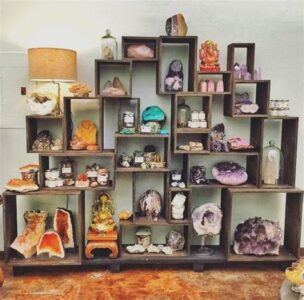Dalmatian stone, also known as Brač stone, is a distinctive and versatile limestone native to the Croatian island of Brač. Renowned for its unique spotted appearance, durability, and exquisite beauty, this stone has graced architectural masterpieces throughout history and continues to captivate designers worldwide.

History and Origin
Dalmatian stone has been quarried on the island of Brač for centuries. The ancient Romans recognized its exceptional qualities and used it extensively in their constructions, including the Diocletian’s Palace in Split, Croatia. Throughout the Middle Ages and the Renaissance, Dalmatian stone became a highly sought-after material for churches, palaces, and other monumental structures.
Composition and Characteristics
Dalmatian stone is composed primarily of calcium carbonate and magnesium carbonate. Its distinctive spotted appearance is attributed to the presence of iron oxide impurities. The stone is characterized by its:
- Durability: Dalmatian stone is highly resistant to weathering, wear, and corrosion. With proper maintenance, it can endure centuries of exposure to harsh environments.
- Strength: This stone exhibits high compressive and flexural strength, making it suitable for structural applications.
- Versatility: Dalmatian stone can be cut, carved, and shaped into various forms, allowing architects to explore diverse design possibilities.
Applications
Dalmatian stone has a wide range of applications in construction and design. Its versatility and durability make it ideal for:
- Exterior cladding: The stone’s natural beauty and resistance to weathering enhance the aesthetics and longevity of building facades.
- Interior flooring: Dalmatian stone tiles create elegant and durable flooring in residential, commercial, and public spaces.
- Countertops and surfaces: The stone’s durability and unique appearance make it a popular choice for kitchen countertops, bathroom vanities, and other surfaces that require both style and functionality.
- Sculptures and decorative elements: Dalmatian stone has been used to create intricate sculptures, fountains, and other decorative elements, adding a touch of sophistication and timeless elegance to architectural designs.
Environmental Considerations
Dalmatian stone is a natural resource that is extracted responsibly. The quarries on Brač adhere to strict environmental regulations to minimize environmental impact and preserve the island’s unique ecosystem.
Sustainability: Dalmatian stone is a durable and long-lasting material that contributes to sustainable construction practices. Its use reduces the need for frequent replacements and minimizes the environmental impact associated with material extraction and waste disposal.
Green Building Certifications: Dalmatian stone can contribute to LEED and other green building certifications by meeting criteria for recycled content, reduced environmental impact, and durability.
Specifications and Properties
The following table provides technical specifications and properties of Dalmatian stone:
| Property | Value |
|---|---|
| Composition | Calcium carbonate (96-98%), magnesium carbonate (1-2%), iron oxide (impurities) |
| Density | 2.6 g/cm³ |
| Compressive strength | 120-140 MPa |
| Flexural strength | 10-12 MPa |
| Water absorption | 0.3-0.5% |
| Frost resistance | Good |
| Mohs hardness | 3-4 |
Installation and Maintenance
Dalmatian stone requires careful installation and proper maintenance to ensure its longevity and beauty.
Installation:
- Prepare the surface by cleaning it and applying a bonding agent.
- Spread mortar evenly over the surface and lay the Dalmatian stone tiles.
- Align the tiles carefully and press them into place.
- Use spacers to maintain consistent joints.
- Grout the joints with a matching color grout.
Maintenance:
- Clean the surface regularly with mild soap and water.
- Avoid using harsh chemicals or abrasive cleaners.
- Apply a protective sealant periodically to protect the stone from stains and moisture.
- Inspect the stone regularly for any signs of wear or damage.
Tips and Tricks
- Choose the right finish: Dalmatian stone can be finished with various surface treatments, such as honed, polished, or tumbled. Consider the desired aesthetic effect and the intended application when selecting the finish.
- Use a matching grout: A grout color that complements the stone’s natural hues will enhance its appearance and create a seamless look.
- Protect from acidic substances: Dalmatian stone is susceptible to acid damage. Avoid contact with acidic substances such as vinegar, citrus juices, or harsh cleaning agents.
- Test for suitability: Before using Dalmatian stone in specific applications, conduct a thorough test to ensure its compatibility with the intended use and environment.
Frequently Asked Questions (FAQs)
Q: What is the difference between Dalmatian stone and other limestones?
A: Dalmatian stone is distinguished by its unique spotted appearance and exceptional durability. It is harder and more resistant to weathering than many other limestones.
Q: Is Dalmatian stone suitable for outdoor use?
A: Yes, Dalmatian stone is well-suited for outdoor use due to its weather resistance and durability. Its spotted appearance can add visual interest and charm to exterior facades and landscaping.
Q: How much does Dalmatian stone cost?
A: The cost of Dalmatian stone varies depending on factors such as the size, finish, and quantity required. Generally, it is more expensive than other limestones but is considered a premium material due to its unique appearance and exceptional qualities.
Q: Where can I find Dalmatian stone?
A: Dalmatian stone is quarried on the island of Brač in Croatia. It is available from reputable stone suppliers and distributors worldwide.
Dalmatian Stone Innovation
The unique characteristics of Dalmatian stone inspire architects and designers to push the boundaries of architectural innovation. One emerging application is the concept of “biostone.” Researchers are exploring the use of Dalmatian stone as a substrate for bioluminescent organisms, creating new possibilities for interactive and sustainable lighting solutions.




























